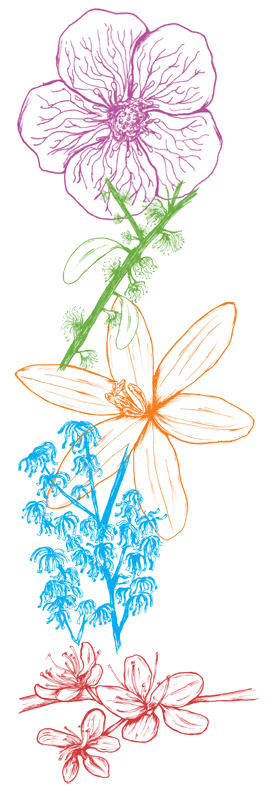Winter Gardens

MUCKING AROUND in a garden in January may not strike you as an idyllic plan. But it can be: there are rafts of plants with cheerful, colorful, fragrant flowers that provide a powerful lift for deprived senses in the depths of winter.
If this winter finds the yard at your place long on grim, dead stalks you haven’t cut back yet and short on inspiration, check out some of the region’s best publicly accessible winter-interest gardens:
Elk Rock Garden (Bishop’s Close)
Tucked in tony Dunthorpe and owned by the Episcopal Diocese of Portland, this is one of the area’s most luxurious outdoor spaces. Starting in mid-January, visit for the crocus, winter aconite, conifers, winter honeysuckle, winter hazel, silk tassel, and hellebores. Admission is free, although donations are accepted. elkrockgarden.com
Lan Su Chinese Garden
The walled compound in Old Town is a trove of unusual plants, many specifically grown for year-round beauty and many of which flower in January and February. Look for the rare Camellia transnokoensis, Camellia sasanqua, paperbush, flowering apricot, winter jasmine, and more.
portlandchinesegarden.org
Conifer garden at the Oregon Garden
One of the largest collections of dwarf and miniature conifers in the United States includes rare specimens from around the world. Winter is a brilliant time to view conifers, as many pick up delicious hues of burgundy, smoky purple, orange, and gold in cold weather. oregongarden.org
Next, hit your favorite nursery with this shopping list in hand. It’s best to buy winter-blooming plants while they’re flowering, so you can see what their cold-season features look like in your garden. Any can be planted whenever the ground can be worked, though crocuses are more often available as bulbs in autumn.
HELLEBORES
Famous for blooming through snow, these sprightly and hardy flowers are equally unfazed by rain. The Christmas rose (Helleborus niger), the earliest of the hellebores to flower, often opens in mid-January, with white flowers rising from marbled, almost waxy evergreen leaves.
HIMALAYAN SWEET BOX (SARCOCOCCA)
A tidy broadleaf evergreen with glossy, deep green leaves and sweetly scented little flowers; species range from one foot to six feet tall.
CROCUS TOMMASINIANUS
The English call them “tommies”: small, wild-looking, pale-to-dark purple crocuses that flower very early in the year, providing pollen for hungry bees for many weeks during late winter.
WITCH HAZELS (HAMAMELIS)
These statuesque, small, vase-shaped trees (10 to 12 feet tall) have penetratingly fragrant, threadlike flowers ranging from pale to rich golden yellow, burnt orange, clear bright orange, or shades of brick to blood red. They burst into bloom in January.
WINTER HONEYSUCKLE (LONICERA FRAGRANTISSIMA AND RELATIVES)
Reaching about six to eight feet tall and lusciously fragrant, these honeysuckles are smothered in small, almost translucent flowers with bright yellow stamens. The visual effect is of a puffy cloud of white flowers.



